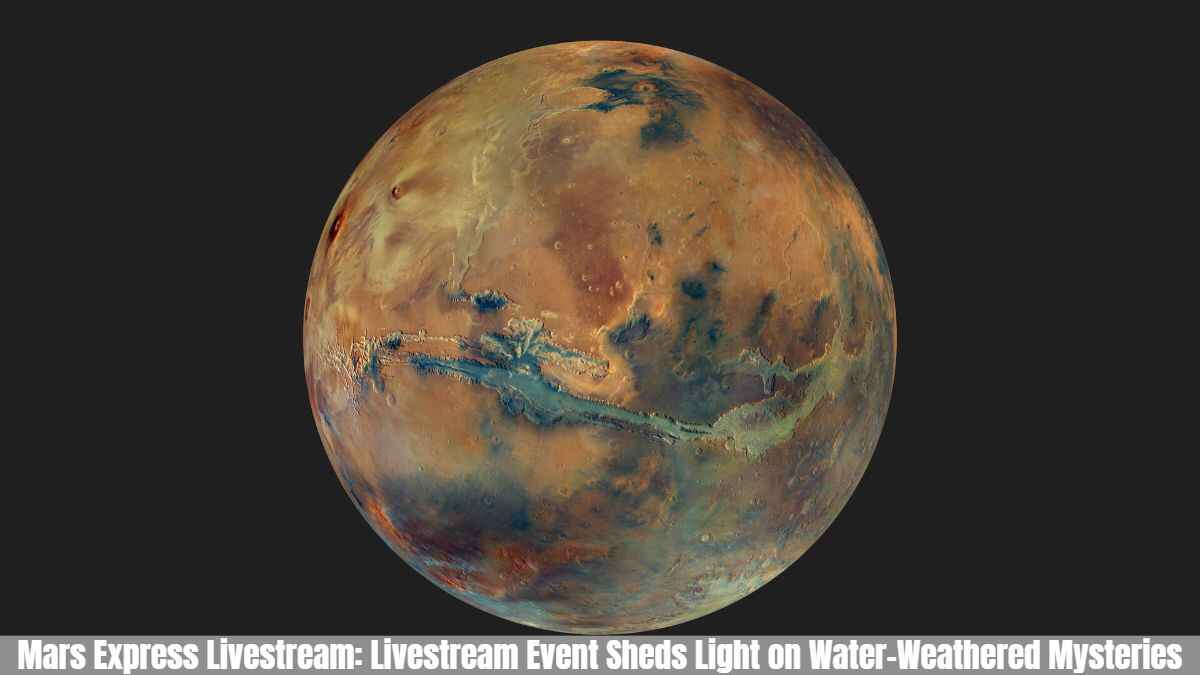
The European Space Agency (ESA) recently hosted an exciting livestream event on Friday, June 2, 2023, giving viewers on Earth never-before-seen images of Mars . Lasting for an hour, this livestream showcases the wonders of the Red Planet, made possible by ESA’s Mars Express orbiter, a spacecraft that has been orbiting Mars since 2003.
One of the standout features of Mars Express is the Visual Surveillance Camera (VMC), a high-resolution camera capable of capturing stunning images of Mars at an impressive resolution of up to 0.2 megapixels. Km -45 km per pixel depending on distance from the planet. . Using this advanced technology, VMC transmits new images of Mars to Earth every 50 seconds during the live broadcast. Although the images are transmitted in real time, the great distance between Mars and Earth means it takes about 17 minutes for the images to reach our planet.

“That’s 17 minutes for light to travel from Mars to Earth in its current configuration, and about a minute to travel through wires and servers on the ground,” ESA said. “Note, we have never tried anything like this before, so the exact signal transmission time on the ground remains uncertain.”
The livestream provided fascinating insights into the composition of Mars, revealing a distinctive range of colors on the planet’s surface. In contrast to its iconic red appearance, the images reveal that significant parts of Mars appear dark and have a blue tint. ESA explains that these blue-toned features consist of dark gray basalt sand that originates from volcanic activity. These sand grains move with the wind, accumulating to form majestic dunes and dune fields inside the impact craters, creating a notable contrast to the red color of the planet.
Among the fascinating discoveries featured in the livestream were the two most common underwater weathering minerals found on Mars: clay minerals and sulfate minerals. These minerals appear particularly bright in the color combination of the image. Their presence suggests the existence of liquid water on Mars over a long period of time, causing weathering and alteration of Martian rocks over time, eventually leading to the formation of clay deposits significantly.
The livestream proved to be a resounding success, giving everyone on Earth an unprecedented opportunity to witness Mars in a whole new perspective. Furthermore, it is a powerful tool to raise awareness of ESA’s Mars Express mission and highlight the importance of space exploration in our collective pursuit of knowledge.
🔴 Join us now @esaopers #MarsLIVE live stream, one hour of images directly from #Mars (we hope😉) 👇https://t.co/Ud6DwQH09J
– ESA (@esa)
June 2, 2023
The future of Mars exploration
The live broadcast from Mars is an exciting look at the future of Mars exploration. As we move forward, the European Space Agency (ESA) and other space organizations have ambitious plans to continue sending missions to the Red Planet. These upcoming efforts promise to unravel more mysteries and expand our knowledge of Mars, including its potential to sustain life.

Among the upcoming missions, ESA’s Rosalind Franklin rover takes center stage. Starting its journey in 2027 and reaching Mars in 2029, this rover has great significance. Equipped with advanced equipment and cutting-edge technology, its main goal is to scour the Martian terrain in search of vital signs that could indicate the presence of life.
However, the Rosalind Franklin probe is only one piece of the puzzle. Many other missions are in the works, all aimed at unraveling the secrets of the Red Planet and its potential to host life. As each mission unfolds, we get closer to the ultimate question: Does life exist on Mars? Through these collective efforts, we pave the way to a future where we can finally find the answers.
Categories: Optical Illusion
Source: pagasa.edu.vn